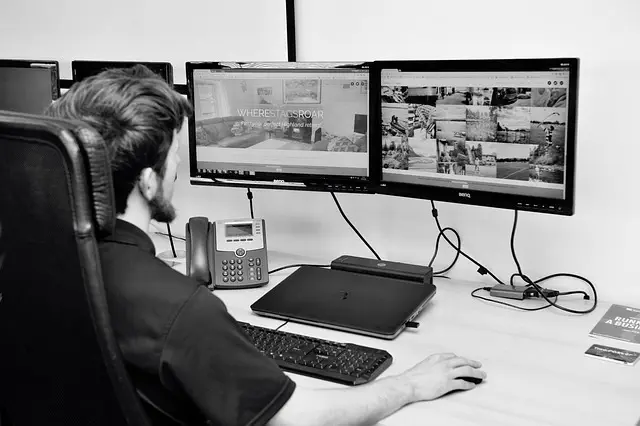Creating a multilingual WordPress Website Design in Mount Laurel, NJ, involves strategic planning beyond translation services. It requires integrating translation plugins, managing dynamic content updates, and optimizing navigation for diverse linguistic backgrounds. By addressing these aspects, businesses can provide an accessible and engaging online experience for global audiences, enhancing their online presence. WordPress is a game-changer, offering user-friendly tools to translate and manage content, making it ideal for reaching an international market. SEO best practices tailored for multilingual sites, including clear domain names, structured data markup, and XML sitemaps, further optimize the online reach of Mount Laurel, NJ businesses.
In today’s globalized world, a multilingual website is no longer a luxury but a necessity. For businesses aiming to expand their reach, understanding the unique needs of international audiences is crucial. This article guides you through the process of creating an engaging WordPress website in Mount Laurel, NJ, tailored for diverse markets. From platform selection to design and SEO best practices, we explore strategies to ensure your multilingual site stands out while connecting with viewers worldwide.
- Understanding Multilingual Website Needs
- WordPress as a Powerful Multilingual Platform
- Design Considerations for Bilingual Websites
- Implementing Language Switchers and Translation Services
- SEO Best Practices for Global Reach with WordPress
Understanding Multilingual Website Needs

Creating a multilingual website involves understanding the unique needs and challenges that come with reaching a global audience. For businesses in Mount Laurel, NJ looking to expand their online presence through WordPress Website Design, this is particularly important. Translation services alone are not enough; the site must be structured and optimized for multiple languages from the ground up. This includes ensuring smooth user experience across different language versions, managing dynamic content updates, and optimizing SEO strategies to rank highly in each target market’s search engines.
Effective multilingual WordPress design involves integrating translation plugins, utilizing multi-domain or sub-domain structures, and carefully planning navigation to accommodate users who may prefer reading from right to left or have specific language preferences. By addressing these aspects, businesses can deliver a professional, accessible, and engaging online experience for visitors from diverse linguistic backgrounds.
WordPress as a Powerful Multilingual Platform

WordPress is an incredibly powerful tool for creating multilingual websites, offering a user-friendly platform that has revolutionized website design in Mount Laurel, NJ and beyond. Its versatility allows businesses to reach a global audience by effortlessly translating content into multiple languages. With a vast library of plugins, WordPress enables seamless integration of translation services, making it simple to manage and update multilingual content.
This platform’s strength lies in its ability to adapt to various language requirements while maintaining a consistent user experience. Whether it’s for a local business expanding its reach or an international corporation, WordPress provides the flexibility to cater to specific linguistic needs. Its popularity is a testament to its effectiveness in empowering businesses with a robust and scalable multilingual website design solution.
Design Considerations for Bilingual Websites

When designing a bilingual website, like a WordPress Website Design Mount Laurel NJ, it’s essential to consider the unique needs of each language to ensure an optimal user experience. This includes not only translating content but also tailoring layout and design elements to accommodate different linguistic structures and character sets. For instance, some languages may require more space for certain words or use non-Latin scripts that need specialized display settings.
Visual hierarchy and typography play a crucial role in bilingual websites. Since users might read from left to right (like English) or right to left (as in Arabic), designers must ensure that critical information is easily scannable and accessible regardless of the reading direction. This careful consideration guarantees that visitors, no matter their linguistic background, can navigate and engage with the site effectively.
Implementing Language Switchers and Translation Services

In the realm of WordPress website design in Mount Laurel, NJ, creating a multilingual site has become increasingly essential to cater to a diverse global audience. Implementing language switchers and translation services is a game-changer for any business aiming to expand its reach. By integrating these features, websites can seamlessly transition between multiple languages, ensuring an inclusive user experience regardless of the visitor’s mother tongue.
Language switchers allow users to toggle between different language options with ease, while translation services enable real-time conversion of content, from text to even complex multimedia elements. This not only enhances accessibility but also signals a commitment to cultural diversity and inclusivity, which is highly valued in today’s globalized market.
SEO Best Practices for Global Reach with WordPress

Creating a multilingual website, especially with WordPress Website Design in Mount Laurel NJ, offers immense opportunities for global reach. To maximize your online presence, incorporate SEO best practices tailored for multilingual content. Start by choosing relevant domain names and URLs for each language to maintain clarity and avoid confusion. Implement structured data markup to help search engines understand the relationship between different languages and their content.
Use translation plugins that support SEO-friendly translations to ensure your site content is optimized for both users and search engines in each target language. Additionally, create separate XML sitemaps for each language variant to notify search engines about the availability of multilingual content. Regularly update meta titles, descriptions, and headers in all languages to reflect the latest information, enhancing user experience and boosting SEO performance.
